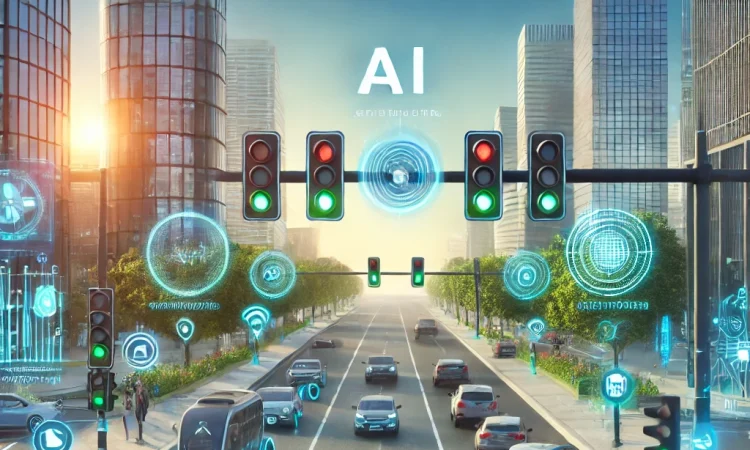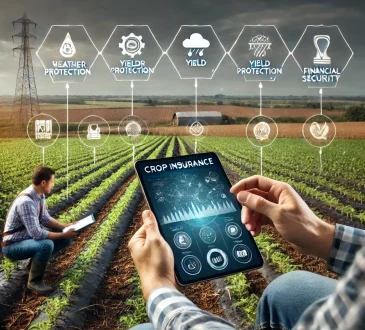
Traffic management is evolving rapidly, and TheTechnoTrick is here to explore how future traffic signals will revolutionize road safety and efficiency. With the rise of smart technologies, AI-driven systems, and IoT integration, traffic signals are becoming more intelligent, ensuring smoother vehicle flow and pedestrian safety.
Related:-
The Ultimate Guide to Warehouse Order Picking Secrets
Can We Start Investing at Any Age? Best Strategies Explained
How ustom Pens Can Elevate Your Corporate Gifts and Giveaways
The Evolution of Traffic Signals
From traditional semaphore systems to modern LED-based signals, traffic control has undergone significant changes. The introduction of sensor-based and AI-driven traffic lights has dramatically improved traffic management in urban areas. However, with increasing vehicle density, further innovations are necessary.
Smart Traffic Lights: A Game Changer
Smart traffic lights use sensors, AI, and real-time data to optimize traffic flow. These systems analyze traffic conditions and adjust signal timings dynamically to reduce congestion and wait times.
Key Features of Smart Traffic Lights:
- AI-based Traffic Management: Adjusts signal timings based on real-time traffic conditions.
- Vehicle-to-Infrastructure (V2I) Communication: Enables vehicles to communicate with traffic signals for smoother transitions.
- Pedestrian Detection: Uses smart cameras to prioritize pedestrian movement at intersections.
- Adaptive Signal Control Technology (ASCT): Reduces congestion by adjusting signals based on traffic volume.
AI-Powered Traffic Signals
Artificial Intelligence (AI) is playing a vital role in modernizing traffic signals. AI-driven systems can predict traffic patterns, detect accidents, and make real-time adjustments to minimize delays.
Benefits of AI in Traffic Signals:
- Reduced Traffic Jams: AI can analyze historical and real-time traffic data to optimize flow.
- Enhanced Safety: AI-based signals detect pedestrians and cyclists, ensuring safe crossings.
- Lower Emissions: By reducing stop-and-go traffic, AI-driven lights help cut down on fuel consumption and pollution.
IoT and Traffic Signal Integration
The Internet of Things (IoT) enables interconnected traffic systems that communicate with vehicles, emergency services, and traffic control centers.
How IoT Enhances Traffic Signals:
- Real-time Traffic Monitoring: Sensors gather data to adjust signal timings accordingly.
- Accident Detection and Response: IoT-connected signals can detect accidents and inform emergency services instantly.
- Smart Parking Guidance: Directs drivers to available parking spaces, reducing unnecessary road congestion.
Solar-Powered Traffic Signals
Sustainability is a crucial focus for future traffic signals. Solar-powered traffic lights offer an eco-friendly alternative, reducing reliance on traditional power sources while ensuring continuous operation during power outages.
Advantages of Solar-Powered Traffic Lights:
- Energy Efficiency: Utilizes renewable solar energy.
- Uninterrupted Functioning: Works even during power failures.
- Cost-Effective: Reduces electricity costs over time.
Autonomous Vehicles and Traffic Signals
As self-driving cars become more common, traffic signals must adapt. Future traffic systems will integrate with autonomous vehicles to create a seamless driving experience.
Future Prospects:
- Connected Vehicle Networks: Autonomous cars will communicate with smart signals for smoother navigation
- Eliminating Red Lights: AI could manage vehicle flow without the need for traditional traffic signals.
- Enhanced Safety: Reduced human error leading to fewer accidents.
Challenges in Implementing Future Traffic Signals
While the future looks promising, certain challenges remain:
- High Implementation Costs: Upgrading existing infrastructure is expensive
- Cybersecurity Risks: Smart systems must be safeguarded against cyber threats
- Public Adaptation: Drivers and pedestrians must be educated about new technologies.
Conclusion
The future of traffic signals is driven by AI, IoT, and sustainable solutions, promising safer and more efficient roads. With continuous advancements, cities worldwide will witness reduced congestion, improved road safety, and enhanced mobility. Stay updated with TheTechnoTrick to explore more innovations shaping the future of transportation.
FAQs
Q1: How do AI-powered traffic signals improve road safety?
A: AI-driven signals detect traffic conditions and pedestrian movement, adjusting signal timings dynamically to prevent accidents and reduce congestion.
Q2: What are the benefits of smart traffic lights?
A: Smart traffic lights optimize signal timings, reduce traffic jams, prioritize emergency vehicles, and enhance pedestrian safety.
Q3: Are solar-powered traffic lights reliable?
A: Yes, they are highly reliable as they function during power outages, reduce electricity costs, and contribute to sustainability.
Q4: Will autonomous vehicles eliminate the need for traffic signals?
A: In the future, connected vehicle networks may reduce dependency on traditional traffic signals, but a hybrid system will likely be necessary for mixed traffic conditions.
Q5: What challenges exist in implementing smart traffic systems?
A: Major challenges include high costs, cybersecurity threats, and the need for public adaptation to new technologies.




